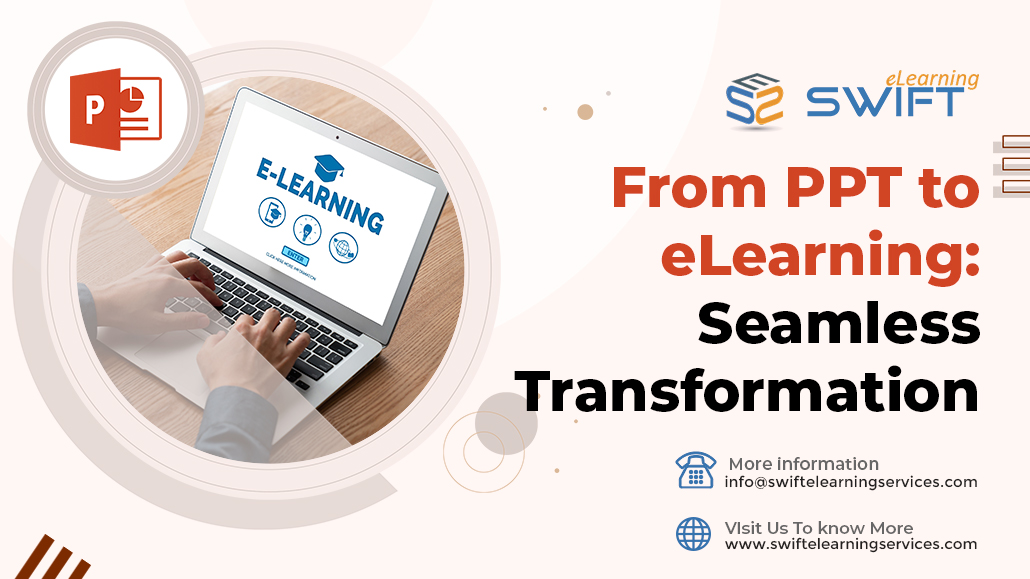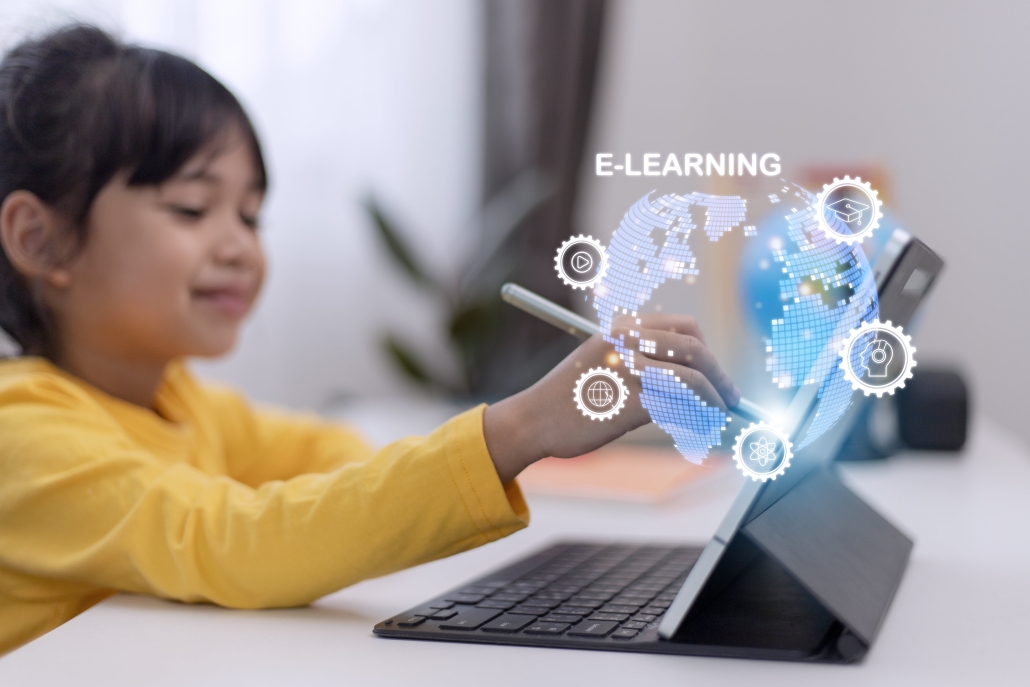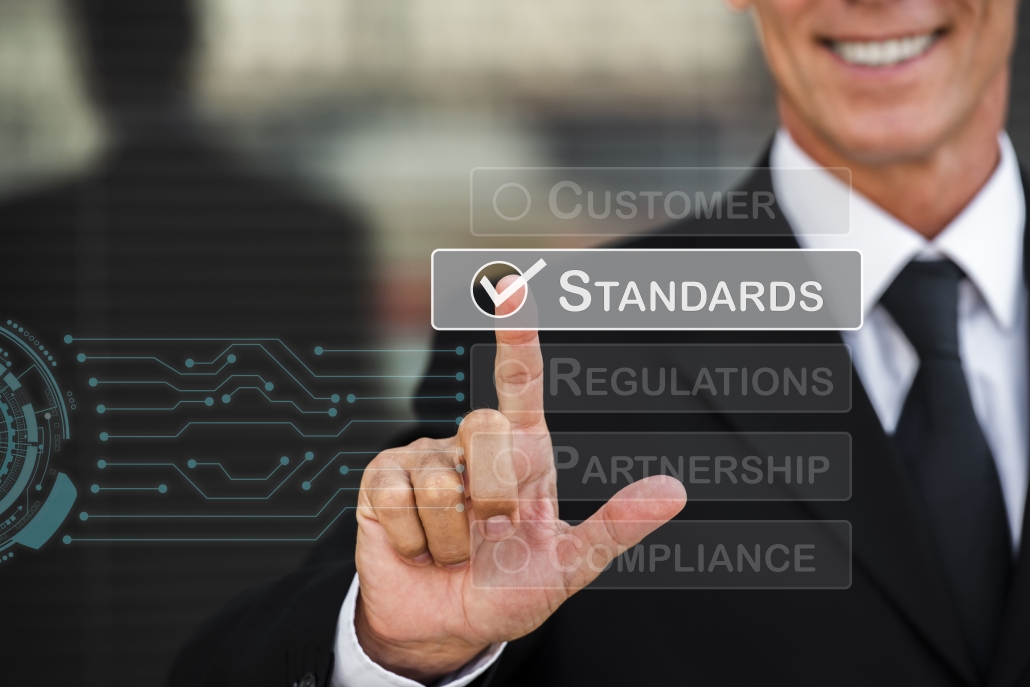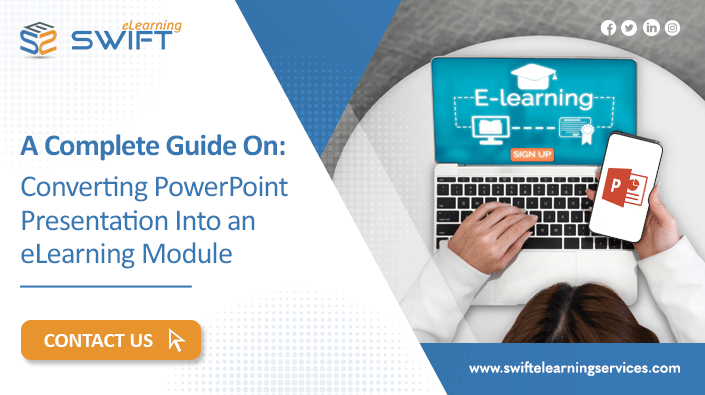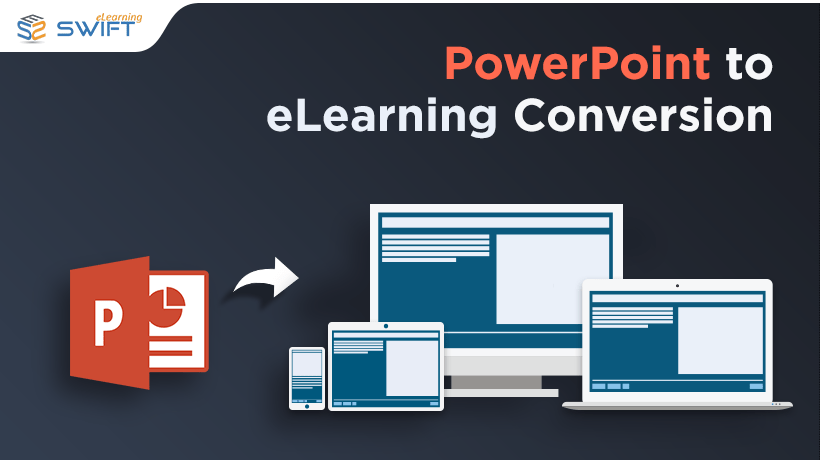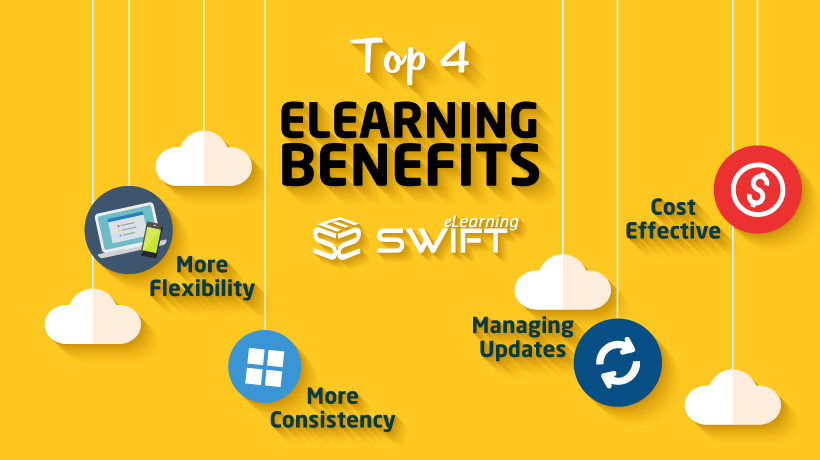From PPT to eLearning: Seamless Transformation
Discover the seamless transformation from PPT to eLearning, exploring the efficient conversion of PowerPoint presentations into engaging eLearning content. Unleash the potential of eLearning for your training needs with our comprehensive guide.
In this comprehensive guide, we will delve into the world of eLearning and explore the seamless transformation from PowerPoint (PPT) presentations to immersive eLearning experiences.
As technology advances, eLearning has become a popular choice for organizations to train their employees, educate students, and deliver engaging content. We will discuss the step-by-step process of converting PPTs to eLearning, the benefits it offers, and best practices to ensure a successful transition.
Let’s embark on this transformative journey and unlock the full potential of eLearning.
1. The Importance of eLearning in the Modern World
In the fast-paced digital era, eLearning has emerged as a game-changer in the education and training landscape. From corporate training to academic learning, eLearning offers numerous advantages over traditional methods.
Students and learners can access content anytime, anywhere, allowing for self-paced learning and increased retention rates. Embracing eLearning not only saves time and resources but also enhances the overall learning experience.
2. Understanding the Seamless Transformation
The seamless transformation from PPT to eLearning involves converting static presentations into interactive and engaging learning modules. It requires the use of specialized eLearning authoring tools and methodologies to enhance learner engagement.
Let’s explore the key steps involved in this transformation:
2.1 Assessing Content Suitability
Before diving into the conversion process, it’s crucial to assess the suitability of the content for eLearning. Not all content is ideal for eLearning delivery, and some concepts may require face-to-face interactions. Identify the learning objectives, target audience, and preferred learning style to ensure a smooth transition.
2.2 Choosing the Right Authoring Tool
Selecting the appropriate eLearning authoring tool plays a vital role in the transformation process. Popular authoring tools like Articulate 360, Adobe Captivate, and Lectora Inspire offer intuitive interfaces and a wide range of interactive features.
2.3 Structuring the Course
Effective course structuring is key to engaging learners throughout their eLearning journey. Break down the content into modules, chapters, or lessons, ensuring a logical flow of information. Use headings, subheadings, and bulleted lists to make the content easily digestible.
2.4 Enhancing with Multimedia Elements
Bring life to your eLearning course by incorporating multimedia elements such as images, videos, audio clips, and animations. These elements not only make the content visually appealing but also aid in knowledge retention.
2.5 Interactivity and Assessments
One of the main advantages of eLearning is its interactivity. Design interactive elements like quizzes, drag-and-drop activities, and simulations to keep learners actively engaged. Additionally, incorporate formative and summative assessments to evaluate learners’ understanding.
2.6 Creating Navigation and User Experience
Ensure that your eLearning course has intuitive navigation, allowing learners to move freely through the content. A seamless user experience contributes to a positive learning environment.
2.7 Implementing Responsive Design
Implement responsive design principles to ensure your eLearning courses adapt to various screen sizes and devices.
2.8 Incorporating Gamification Elements
Gamification adds an element of fun and competition to eLearning. Use gamification elements such as badges, points, leaderboards, and challenges to motivate learners and enhance their learning experience.
2.9 Piloting and Testing
Before the official launch, pilot your eLearning course with a small group of learners to gather feedback and make necessary improvements. Conduct thorough testing to ensure the course runs smoothly on different platforms and devices.
3. Benefits of eLearning Transformation
The transformation from PPT to eLearning brings forth a host of benefits, revolutionizing the learning landscape:
3.1 Flexibility and Accessibility
ELearning allows learners to access the content at their convenience, eliminating the constraints of time and location. This flexibility is particularly beneficial for remote learners or those with busy schedules.
3.2 Cost-Effectiveness
Compared to traditional training methods, eLearning significantly reduces costs associated with venue rentals, printed materials, and travel expenses.
3.3 Improved Engagement and Retention
Interactive eLearning courses keep learners engaged, leading to better retention of information and increased knowledge application.
3.4 Real-Time Performance Tracking
ELearning platforms offer real-time tracking of learners’ progress and performance, enabling trainers to identify areas of improvement and adapt the content accordingly.
3.5 Consistent Training Quality
ELearning ensures consistent delivery of training materials, guaranteeing that every learner receives the same level of instruction.
3.6 Environmentally Friendly
By eliminating the need for printed materials and physical infrastructure, eLearning contributes to a greener, more sustainable environment.
4. Best Practices for a Successful Transformation
To ensure a smooth and successful transformation from PPT to eLearning, consider the following best practices:
4.1 Align with Learning Objectives
Always align your eLearning content with clear and measurable learning objectives. This alignment ensures that the course addresses specific learning outcomes.
4.2 Chunk Information
Chunking information into smaller, manageable portions enhances content retention and prevents cognitive overload.
4.3 Engaging Narration and Storytelling
Incorporate engaging narration and storytelling techniques to create a memorable learning experience.
4.4 Encourage Collaborative Learning
Promote collaborative learning through discussion forums, virtual classrooms, and group activities to foster a sense of community among learners.
4.5 Regularly Update Content
Keep your eLearning content up-to-date with the latest information and industry trends to provide relevant and valuable knowledge.
4.6 Provide Immediate Feedback
Offer immediate feedback on assessments and activities, reinforcing learning and helping learners improve their performance.
4.7 Continuous Improvement
Encourage a culture of continuous improvement by gathering feedback from learners and stakeholders and applying it to future iterations of the course.
5. Transform Your PowerPoint Presentations into Engaging eLearning
At Swift eLearning Services, we understand the significance of delivering effective training and educational content in the digital age. Our PPT to eLearning Conversion Service is designed to help organizations elevate their training programs by transforming static PowerPoint presentations into interactive and dynamic eLearning modules.
6. Why Choose Our PPT to eLearning Conversion Service?
Converting PowerPoint presentations to eLearning content requires expertise, creativity, and a deep understanding of instructional design. Swift eLearning Services offers a comprehensive solution that ensures your eLearning content is not only visually appealing but also highly effective in achieving your training objectives.
7. The Swift eLearning Services Advantage
7.1 Expertise in eLearning Development
Our team of eLearning experts has years of experience in creating engaging and impactful eLearning content. We combine instructional design principles with multimedia elements to deliver training that resonates with your learners.
7.2 Interactive Learning Solutions
We believe in the power of interactivity to enhance learner engagement. Our eLearning modules feature interactive elements, simulations, and gamified components that make learning enjoyable and effective.
7.3 Mobile Compatibility
In today’s mobile-driven world, learners expect flexibility in accessing training content. Our eLearning content is optimized for various devices, including smartphones and tablets, ensuring seamless learning experiences on-the-go.
7.4 Accessibility and Inclusivity
We are committed to making eLearning accessible to all learners, including those with diverse abilities. Our eLearning conversion process incorporates accessibility features, making the content inclusive for everyone.
7.5 Data-Driven Approach
To continuously improve the effectiveness of your eLearning content, we leverage analytics to gather valuable insights into learner performance and engagement. These insights help in refining the training content for better results.
7.6 Customization Options
We understand that each organization has unique training needs. Our PPT to eLearning Conversion Service offers customization options to tailor the eLearning content to match your specific requirements.
7.7 Seamless Integration with LMS
Managing and tracking learners’ progress is essential for efficient training management. Our eLearning content seamlessly integrates with Learning Management Systems (LMS), providing centralized control over training activities.
7.8 Content Security and Confidentiality
We prioritize the security of your training materials and intellectual property. Our strict data security measures ensure that your content remains confidential and protected throughout the conversion process.
8. Take Your Training to the Next Level with Swift eLearning Services
Transform your static PowerPoint presentations into captivating and effective eLearning content with Swift eLearning Services. Embrace the power of interactive learning and reach your training goals efficiently. Let our experienced team take your training initiatives to new heights.
Contact us today to discuss your PPT to eLearning conversion requirements and unlock the potential of your training programs!
9. Conclusion – From PPT to eLearning: Seamless Transformation
From PPT to eLearning: Seamless Transformation offers an innovative approach to modern education and training. Embracing eLearning not only provides flexibility and cost-effectiveness but also enhances learner engagement and knowledge retention.
By following best practices and choosing the right authoring tools, organizations can unlock the full potential of eLearning and drive success in their learning initiatives. Transform your static presentations into dynamic eLearning experiences and revolutionize the way knowledge is imparted.
10. FAQ’s About From PPT to eLearning: Seamless Transformation
How long does it take to transform a PPT into eLearning?
The time required for the transformation process depends on the complexity of the content, the extent of interactivity, and the proficiency of the eLearning authoring tool. On average, it may take several weeks to develop a comprehensive eLearning course.
What makes eLearning more effective than traditional classroom training?
ELearning offers the advantage of self-paced learning, allowing individuals to proceed at their own speed. Additionally, the incorporation of multimedia elements and interactive activities enhances engagement and knowledge retention.
Can I track learners’ progress in eLearning courses?
Yes, eLearning platforms provide real-time tracking of learners’ progress, allowing trainers and administrators to monitor their performance, identify areas of improvement, and provide targeted support.
Is eLearning suitable for all types of content?
While eLearning is effective for a wide range of subjects, some concepts may require hands-on practice or face-to-face interactions. It’s essential to evaluate the content’s suitability for eLearning before initiating the transformation process.
Can gamification elements be added to any eLearning course?
Yes, gamification elements can be incorporated into almost any eLearning course, making the learning experience more enjoyable and motivating for learners.
What are the key features to look for in an eLearning authoring tool?
When choosing an eLearning authoring tool, consider factors such as ease of use, available interactive features, compatibility with different devices, and customer support.

